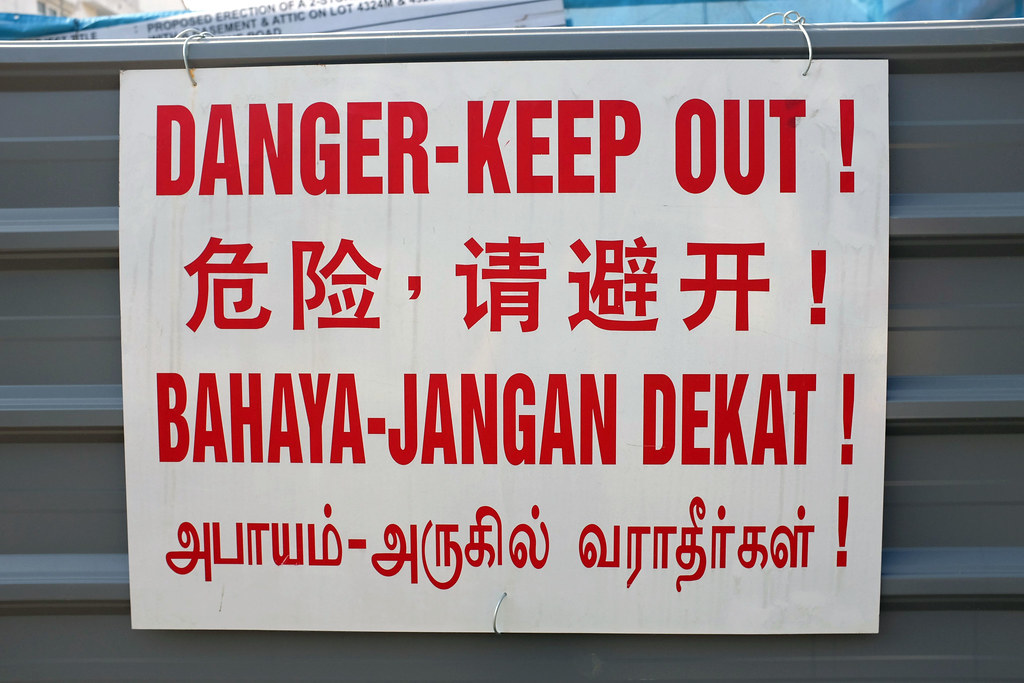
Tamil in Malaya/Singapore
I took some Tamil lessons a few years ago when I came to Singapore and even received a certificate proclaiming my knowledge of elementary Tamil. I took some beginner lessons and kept studying while I had other things going on. My learning was supplemented by my girlfriend at the time, who also spoke Tamil and her perspective as a Tamil raised in Malaysia by Indian Tamil parents gave me some interesting insights into the world of Tamil language and culture in Southeast Asia.
Thaipusam is a holiday celebrated only in Malaysia and Singapore - if you go to India and ask “When is Thaipusam?” most people will look at you funny. Fair enough - you might say - it is a South Indian population here in Malaya that celebrates it, so go to South India - and yes , even there most people will look at you funny as you ask that question. OK, it is specifically Tamils who celebrate this holiday in Malaysia and Singapore so maybe go to Tamil Nadu? And yes, you’ll find…even there…most people have no idea what Thaipusam is. It is a holiday specific to the religious practices of a group of people in one village in Tamil Nadu where the East India Company drew most of its indentured labourers from, in order to populate the straits. The incredibly large and diverse Tamil community here was originally founded by people from one or two villages! These people brought their culture and their language and their holidays and met the Malay and Chinese population here.
As a result of the ensuing cultural mixing between Malays, Indians and Chinese, as well as the passage of time, a few interesting linguistic changes popped up - the most common one being a k-> g migration in transcription. It is unclear to me whether this happened in Indian Tamil or in Straits Tamil. I would assume that sounds using ‘g’ are older and preserved, while the migration to the ‘k’ sound is maybe just a difference in transliteration. A name like Chandrasekharan in India would be spelled Chandrasegaran in Singapore. I tried to listen to the difference between avaragal (beautiful) as said by these Sufi musicians from Tamil Nadu against my teacher saying it here in Singapore. I could find no difference myself so I might just chalk this one up to “Difference in transliteration into English.”
To add to this little story - Tamil people in Singapore and Malaysia don’t say the traditional Tamil word for zero - they say kosong - a word that has both k and g sounds. To me, this sounds very clearly like a k at the beginning and g at the end when I hear it said by members of every Singaporean community. But I might be mistaken here too.
Bahasa Melayu (Malay), like Bahasa Indonesia, doesn’t seem to use the /sh/ sound very much. Indonesians when they say Indonesia, do not say the /sh/ sound but use the /s/. The two languages have an enormous vernacular overlap - more than 80% - and one of the interesting words common to both, that has an impact on the Tamil community is dosa. It was borrowed from Sanskrit dosha meaning sin. However, the /sh/ -> /s/ transition means that sin in Malay and Indonesian is pronounced the way that the South Indian breakfast item is. This naturally leads to some problems for mamak stalls trying to market their product - which is why in many parts of Singapore, you’ll see dosa listed instead as thosai and pronounced as such.
In Tamil Nadu, this would be a very village or homey way of saying dosa. Dosa is what you eat outside and thosai is maybe what your grandmother makes for you. Or so I hear.